What was the hottest summer on record drove the biggest seasonal melt ever recorded at the Southern Alps, Dr Jim Salinger says.
The veteran climate scientist, who gave a presentation to a meteorology conference in Christchurch today, has described the mountain range as a "canary in the coal mine", due to the sensitivity of its postcard glaciers to climate change.

New Zealand's glaciers have been losing ice since annual snowline surveys began 40 years ago - a trend that had been in step with rising average sea surface temperatures around the country.
But the summer of 2017-18 - which broke an 84-year-old record for warmth - had hit them particularly hard.
During the usual melt season on the Southern Alps, running from November to March, temperatures had been 2.2 deg Celsius above normal.
This had been coupled with many highs passing over the region, along with a very unusual lack of westerly winds.
At the same time, a marine heatwave that engulfed New Zealand's waters pushed sea surface temperatures to between 2.5C and 4C above average through much of December 2017.
Incredibly, some localised spots off the West Coast even reached between 4C and 6C above normal.
Salinger, speaking at the hydrological and meteorological societies' joint conference today, estimated the total ice volume loss for the 2018 glacier year was 3.76 cubic km of water equivalent.
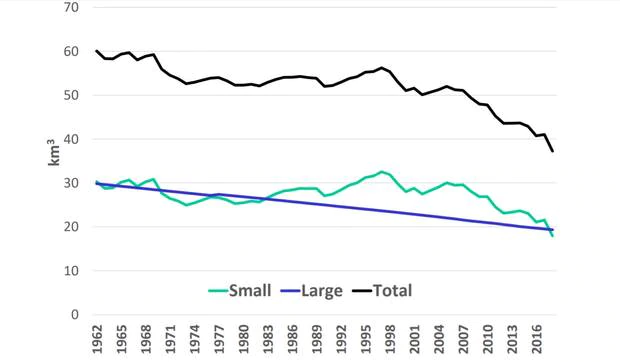
That was around 9% of the alps' total ice volume - and the greatest annual loss on record.
But he told The New Zealand Herald he wasn't surprised at this result.
"With the warmth, clear skies and lack of weather patterns that produce snow, this was ideal for much melt of glacier ice."
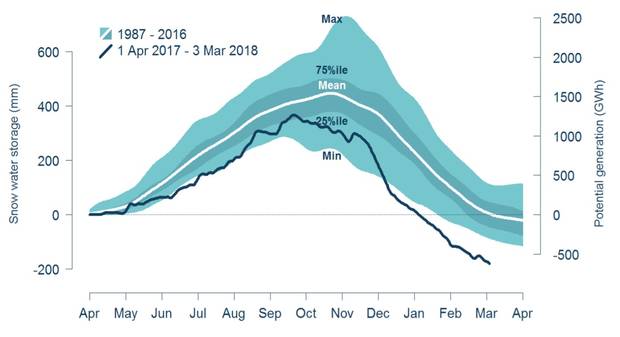
The sorry state of the glaciers had earlier been observed by this year's Niwa-led aerial survey of more than 40 glaciers.
Most of the larger glaciers surveyed had been earlier found to respond quickly to changes in climate.
While smaller ones could change rapidly with year-to-year shifts, some could take many decades to respond because they had a thick layer of insulating rock cover.
Glacier fluctuations were among the clearest signals of climate change, because they were highly sensitive indicators of atmospheric temperature and precipitation levels.
One recent study suggested New Zealand's total glacier area had shrunk from 1240 sq km to 857 sq km since the late 1970s - a decrease of 31%, or just under 1% of loss each year.
Salinger said some of last summer's records could be attributed to climate change, because this had driven warmer sea temperatures, along with a positive Southern Annular Mode.
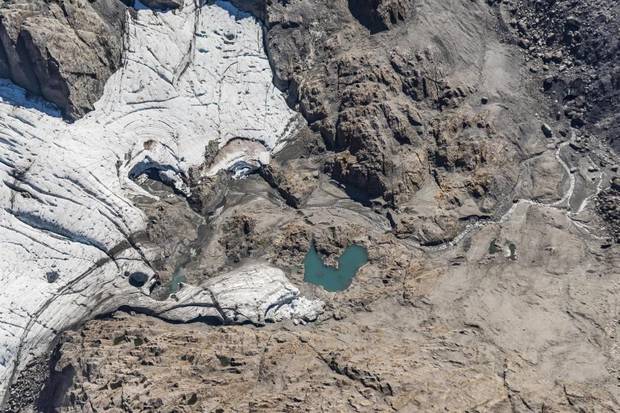
"Our alps are the canary in the coal mine for anthropogenic warming because the glaciers are very sensitive to higher temperatures and changed weather patterns in the melt season expected with climate change."
Whether the overall trend of ongoing loss continued was dependent on how the world acted on climate change.
One scenario that assumed future warming could be limited only to another 2C - the ultimate goal of the Paris Agreement on climate change - would see glaciers keep retreating but stabilising by the middle of the century.
But if emissions continued to ramp up without any efforts to curb them, glaciers could become virtually unrecognisable by 2100.
Around the world, glaciers were already melting at an unprecedented rate, losing on average between half a metre and metre of ice thickness every year.
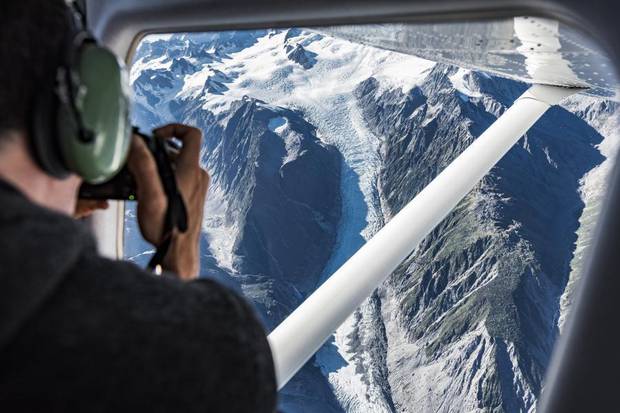
ARE CLOUDS MELTING OUR GLACIERS?
Meanwhile, a new study is under way to unravel the influence of clouds on the melting of the South Island's glaciers.
"When it comes to studying the interaction of climate and glaciers, most previous work has focused on changes in air temperature and precipitation - or rainfall and snowfall," explained Dr Jono Conway, of Alexandra-based Bodeker Scientific.
"We know, however, that they are only part of the picture."
It combined with other elements of the climate system - among them clouds, wind and water vapour - to drive what scientists termed the meteorological forcing of glacier melt.
During his PhD research at Otago University, Conway made detailed measurements of the meteorology and glacier melt on Brewster Glacier in the Southern Alps.
"These measurements enabled us to show that clouds influence how much a glacier responds to changes in air temperature - such as that expected in the future," he said.
"The implication here is that, if clouds change in the future, this will alter how much a glacier will melt with climate change."
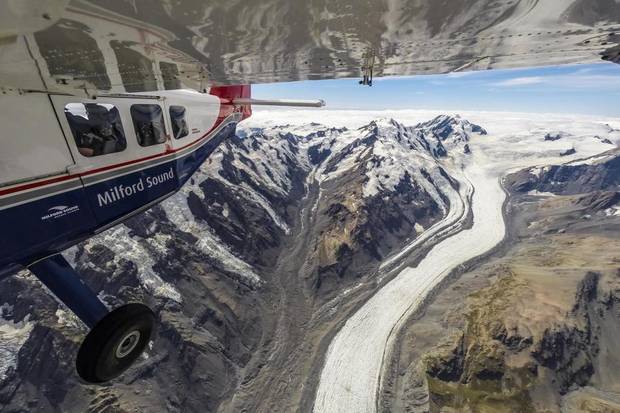
This formed the central question of a new study he is leading, supported with a $300,000 grant from the Marsden Fund.
"What I'd like to explore in this study is whether we see the same effect over other glaciers around the world," he said.
"Are the same relationships between clouds, air temperature and melt there? Are they stronger, weaker, completely different? "
These relationships might provide a way of explaining why different glaciers respond differently to climate change in different areas.
"Luckily for me, there are many groups around the world who have been making similar measurements on glaciers in other areas with the goal of quantifying glacier meteorology.
"They're really keen for me to use their data to look at the question of clouds."
The first step of his study will be to collate data from other areas and perform the same analyses he did with the Brewster Glacier.
"I've already had a lot of interest, so I might be inundated with data and have to spend getting everything sorted into the same format for analysis," he said.
"It would be great to get data from a large number of areas as it will increase the relevance of our findings internationally."
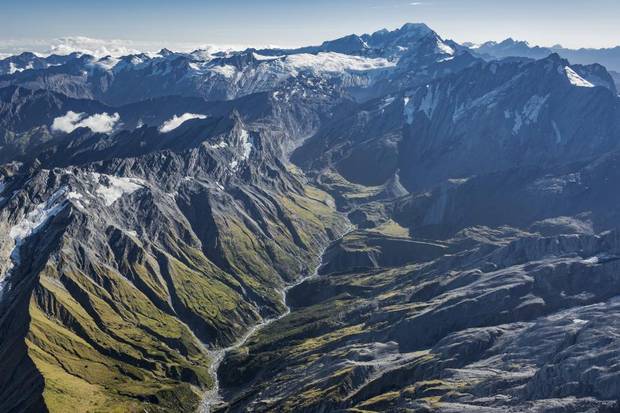
On this part of the project, he would team up again with scientists who assisted his post-doctoral research.
"Together, we installed weather stations on glaciers in the Rocky Mountains that provide an even more detailed picture of the glacier weather than we have at Brewster Glacier."
The second part of the study would look at how well high-resolution weather models predicted the meteorology over glaciers, with a focus on how well they simulate the effect of clouds on the surface.
"If the models do a good job, then I can use the model to understand how the glacier might respond to future climate and how clouds influence this response."
But there would be big challenges.
High-resolution weather modelling was relatively new territory for the science world, and was pushing our understanding of how all the physical processes occurring in the atmosphere interacted in mountainous regions.
"In a lot of situations, the computer kind of gives up and says, nah, sorry, can't do that, the maths is too hard," he said.
"So you have to go in and find out what the problem is, tweak things, and see if things run the next time."
Conway nonetheless expected to learn much about how the glacier-climate system works in mountains.
"The real-world data is always fascinating and often leaves you answering one question but leaving you with many new questions," he said.
"I hope that we'd be able to get the high-resolution weather model to successfully simulate clouds over the glaciers - and that from this we'll be able to assess how things might change in the future."
- By Jamie Morton












